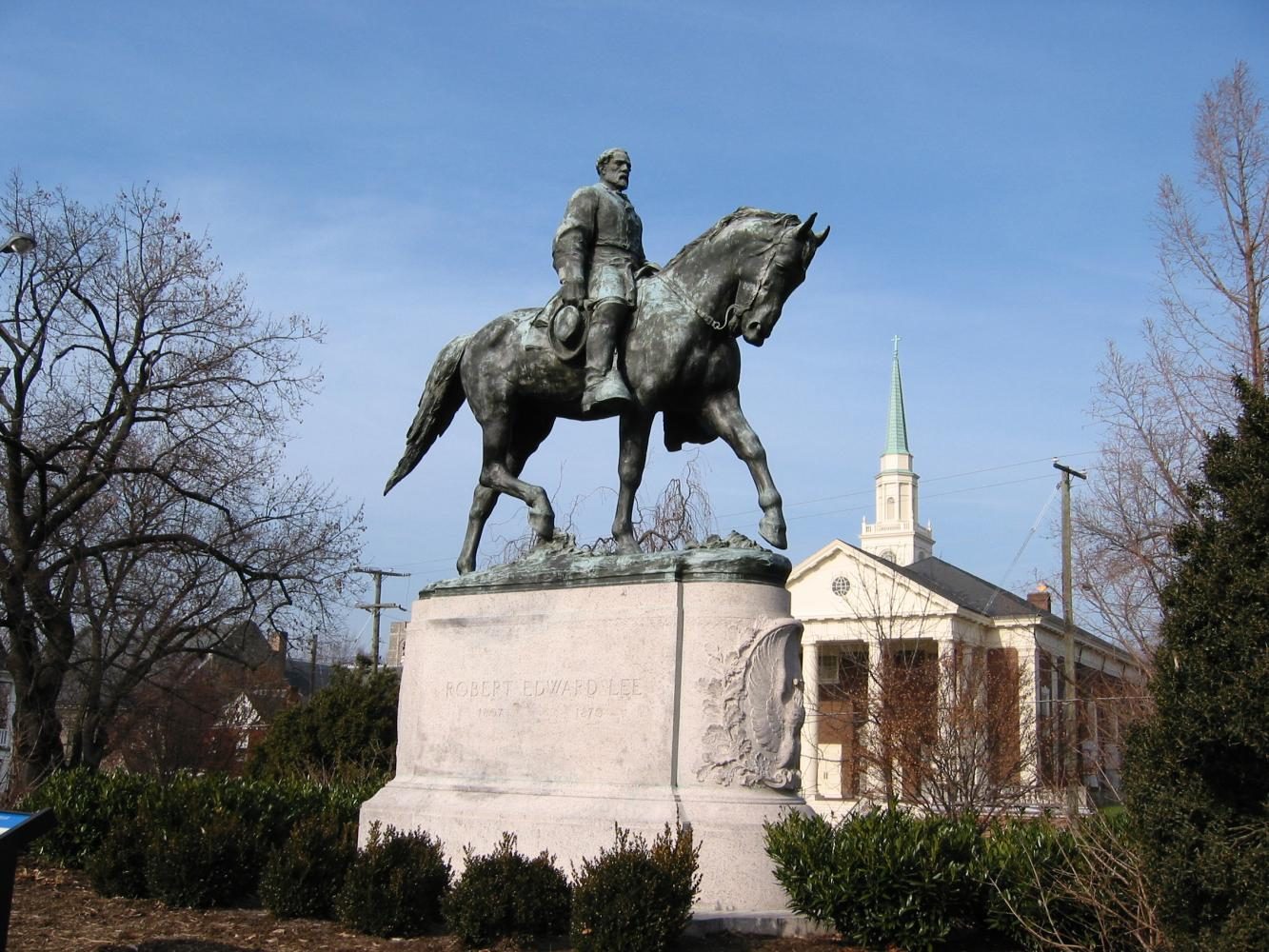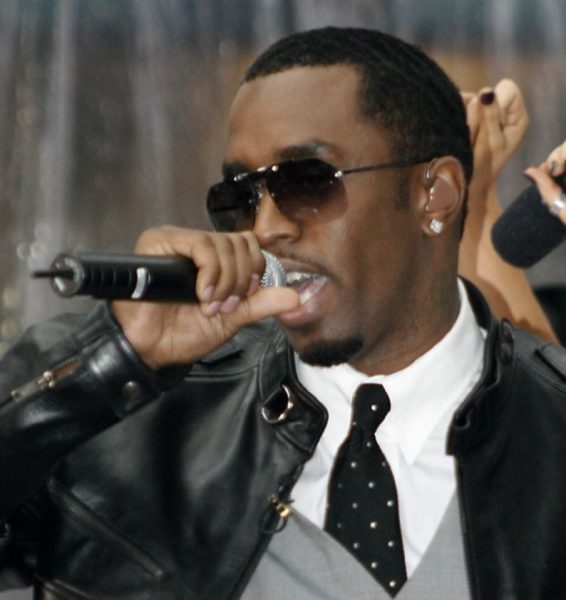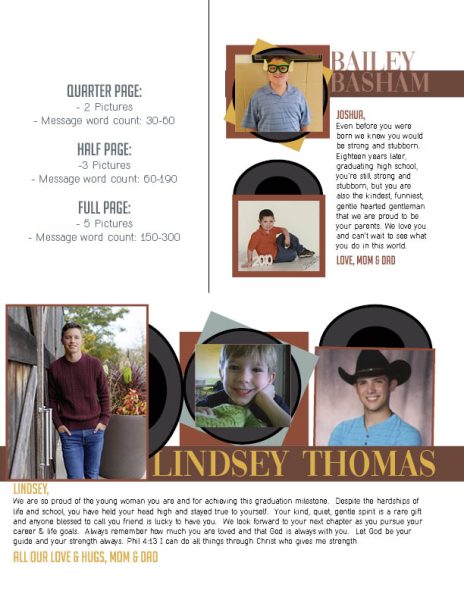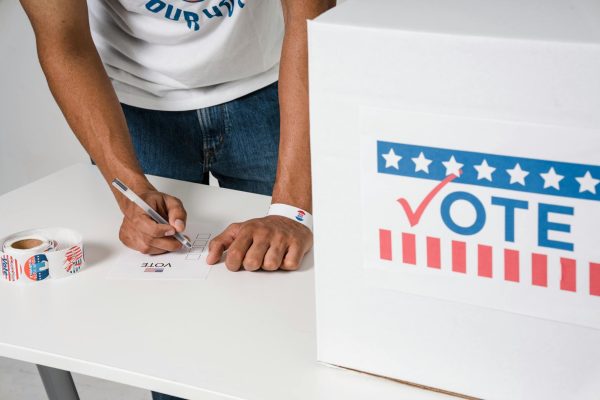Monumental Problems
These statues aren’t so set in stone.
August has proved a busy month for residents in the town of Charlottesville, Virginia, fit with chaos, rallies and violence over a bronze sculpture and it’s place in the community.
Statues of Confederate leaders are a topic of interest in many of today’s conversations. Two weeks ago, hundreds of people rallied against the decision to remove a sculpture of Robert E. Lee from a public park in Charlottesville, and it quickly turned violent. The media later slammed President Donald Trump for his response, and lack thereof, to the brutality that took place at the rallies.
In 1861, 11 southern states in the United States aspired for their own republic that preserved the institution of slavery and the rights of white people, quickly forming the Confederacy. One hundred and fifty years after the Confederacy’s loss in the Civil War, a number of ill-fated southern icons still remain standing in stone form.
These statues of crucial figures in the fight to maintain independence from the Union reside in public areas of work and play all over the country. In recent months, light has begun to shine on the issue of what morals these statues are really conveying to citizens. “It reflects society’s values,” said social studies teacher Doug Osborne.
Among one of these crucial figures is Robert E. Lee, whose poised physique is sculpted on top of a horse at Emancipation Park in Charlottesville, Virginia. Lee served as a General to the Confederate army for the entirety of the Civil War. As early as 2012, local officials and residents were voicing their distaste for the statue and what it represented.
The Charlottesville City Council decided to take matters into their own hands in early 2016 when Vice Mayor Wes Bellamy appointed a commission in May to talk the matter out. In April of this year, the council finally voted to remove the statue from Emancipation Park.
On Friday, August 11, white supremacists who disagreed with the decision congregated on the campus of the University of Virginia. Armed with tiki torches, they marched while chanting both the KKK mantra and Nazi slogan. The group eventually confronted with counter-protesters, who were circled around a statue of Thomas Jefferson, arms locked. Violence soon erupted, with punches from both sides. It took minutes before police arrived to dismantle the fighting.
This decision also angered Jason Kessler, a self-proclaimed white supremacist, deciding to “unite the white” and organize a rally to protest. It was scheduled to begin at noon and go until five that night, but protesters were there much earlier. By 11 a.m., violence had erupted yet again in the streets of Charlottesville. Police were on the scene, yet failed to dismantle the fighting in a timely manner.
The rally consisted of hundreds of people in the streets chanting prejudice and angry remarks, Swastika flags, Confederate flags, and of course; violence. The most extreme incident was instigated by 20-year-old James Alex Field Jr. who plowed a car into a crowd of anti-racist protesters, which led to many injured and one casualty. A total of 35 protestors were injured due to a variety of harmful acts.
With chaos erupting and controversy stirring up, people were looking to the President of the United States to make a statement about the situation. Many were angered by the delayed response to the plight. “…he should have denounced bigotry and all organizations promoting racism and the division of this country immediately,” said business teacher Fay Anderson.
Four days after the initial rally, Donald Trump finally spoke on the issue, without a 140 character limit holding him back. “We condemn in the strongest possible terms this egregious display of hatred, bigotry and violence, on many sides,” Trump tells press. Numerous people questioned this statement, and took their thoughts to social media. Twitter users argued that “many sides” are not responsible for the hate and bigotry that took place at the Charlottesville rally, only one.
If this wasn’t enough to get people talking, Trump’s second response definitely stirred the pot. Later that week, a press video was released of Trump addressing the situation once again. “What about the alt-left that came charging at the… alt-right? Do they have any semblance of guilt?,” Trump tells ABC. Later following, he explains how both “sides” were to blame for the violence. Many people disapproved of this statement saying it was not right putting both “sides” on the same moral playing field.
Despite the violence and anger that came about due to the rally, many have seen this unfortunate occurrence as a reminder that white supremacy and discrimination is still a relevant issue in today’s society. ¨… everyone has the right to voice their opinion; however, I don’t believe the individuals participating in the “rally” had any other purpose but to demonstrate their hatred for others who didn’t look like them,¨ said Anderson.









